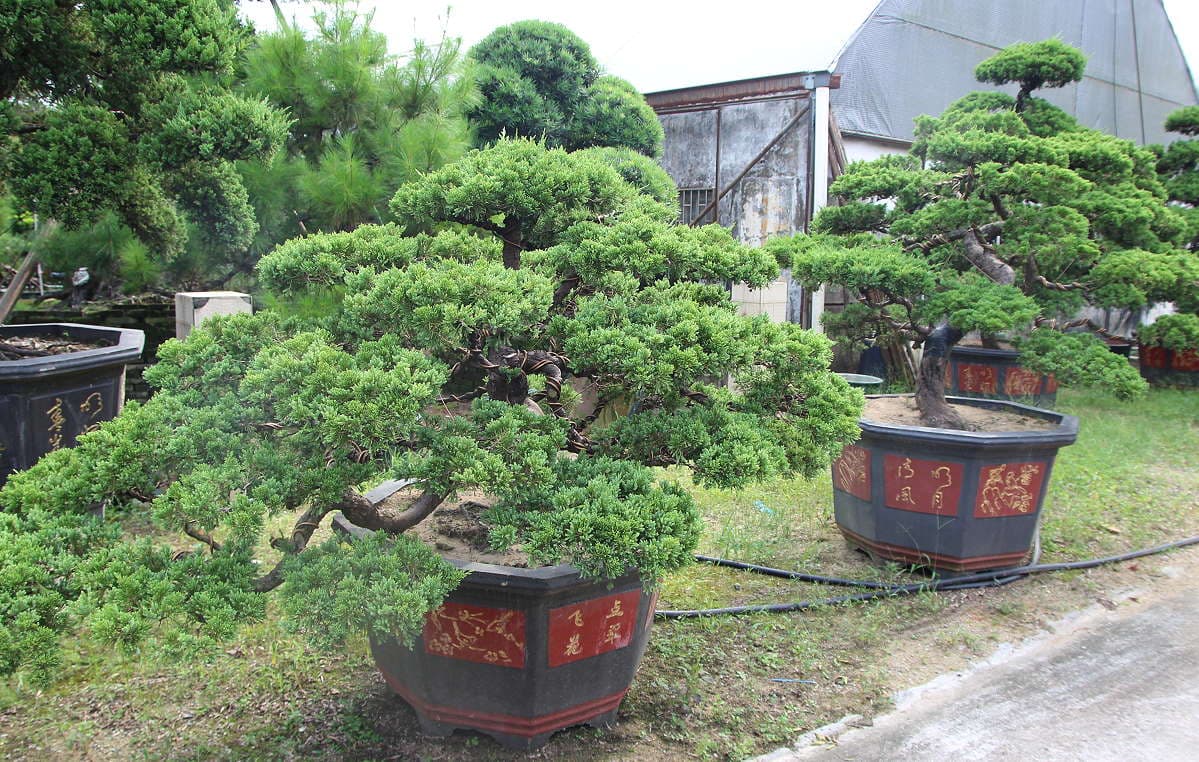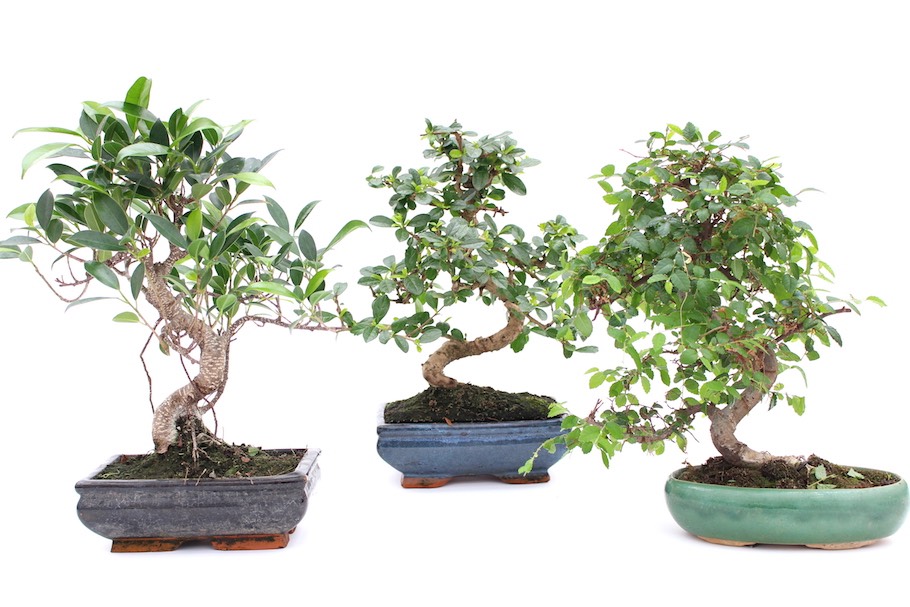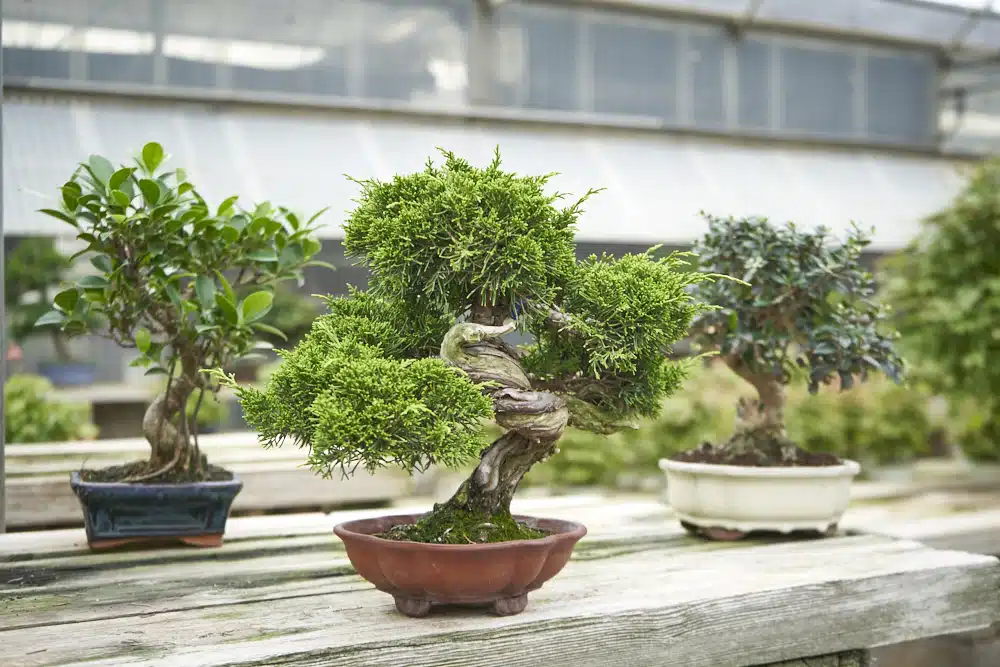Water bonsai trees regularly and prune them to maintain shape. Use well-draining soil and place them in indirect sunlight.
Growing a bonsai tree is an art that requires patience and dedication. These miniature trees need specific care to thrive. Regular watering ensures they don’t dry out, while pruning helps maintain their aesthetic shape. Well-draining soil prevents root rot, crucial for their health.
Place bonsai in a spot with indirect sunlight to mimic their natural habitat. With these tips, anyone can nurture a beautiful bonsai. This guide will help you master the basics, ensuring your bonsai remains healthy and stunning. Whether you’re a beginner or an expert, these tips are essential for successful bonsai care.

Credit: www.bonsai-shop.com
Introduction To Bonsai
Bonsai is the ancient art of growing small trees. These trees mimic the shape and scale of full-sized trees. Bonsai trees are grown in containers. They can be shaped and pruned over time to create beautiful living sculptures.
History Of Bonsai
The art of bonsai began over a thousand years ago. It started in China, where it was known as “pun-sai”. The Japanese later adopted and refined the practice. They developed their own unique styles and techniques.
| Era | Significant Development |
|---|---|
| Tang Dynasty | Early bonsai practices in China |
| Kamakura Period | Introduction of bonsai to Japan |
| Modern Era | Global spread and popularity |
Bonsai In Modern Culture
Today, bonsai is enjoyed all over the world. People of all ages and cultures practice it. Bonsai trees can be found in homes, offices, and gardens. They bring a touch of nature into our daily lives.
- Bonsai clubs and societies are popular.
- Exhibitions and competitions are held globally.
- Online communities share tips and techniques.
Growing a bonsai tree teaches patience and care. It connects people with nature and provides a sense of accomplishment.
Choosing The Right Tree
Choosing the right tree is vital for a successful Bonsai journey. The right tree will thrive in your environment and match your skill level. This section will guide you through the best species and climate considerations.
Best Species For Beginners
Starting with the right species makes a huge difference. Here are some of the best species for beginners:
- Ficus – Easy to care for and very forgiving.
- Juniper – Hardy and great for shaping.
- Chinese Elm – Adaptable and robust.
Climate Considerations
Climate plays a crucial role in your Bonsai’s health. Consider these factors:
| Climate Type | Recommended Species |
|---|---|
| Temperate | Maple, Oak, Pine |
| Tropical | Ficus, Jade, Bougainvillea |
| Arid | Juniper, Olive, Pomegranate |
Choose a species that suits your climate to ensure healthy growth. Match the tree’s needs with your local weather for the best results.
Essential Tools
Bonsai care needs special tools for success. These tools help shape and maintain the tree’s beauty. Let’s explore the essential tools every bonsai enthusiast should have.
Basic Toolkit
The basic toolkit includes all the tools you need to start. Here’s a list of the most essential tools:
- Pruning Shears: These are used for trimming branches and leaves.
- Concave Cutters: They make clean cuts, helping the tree heal better.
- Wire Cutters: These are for cutting bonsai wire without damaging the tree.
- Bonsai Wire: This helps shape the tree’s branches.
- Root Rake: Use this to untangle roots and remove old soil.
- Watering Can: A small, fine-spouted can is perfect for watering bonsai.
Advanced Tools
Advanced tools help refine and perfect your bonsai skills. Consider these tools as you advance:
| Tool | Purpose |
|---|---|
| Jin Pliers | Used for creating deadwood features on the bonsai. |
| Knob Cutters | They remove larger branches and leave a smooth cut. |
| Root Cutters | Specially designed for cutting thick roots. |
| Defoliation Scissors | Used for trimming leaves precisely. |
| Soil Scoop | Helps in adding or removing soil without making a mess. |
Having these tools will make bonsai care easier and more enjoyable.

Credit: www.bonsaiempire.com
Planting Techniques
Planting a bonsai tree correctly is crucial for its health and growth. This section covers the essential planting techniques. Learn the basics of potting and soil selection to ensure your bonsai thrives.
Potting Basics
Choosing the right pot is vital for bonsai health. The pot should have drainage holes. This prevents water from pooling at the roots. Select a pot that fits the size of your bonsai tree. A pot that’s too large or too small can hinder growth.
- Drainage Holes: Ensure your pot has adequate drainage.
- Size: Match the pot size to your bonsai tree.
- Material: Use ceramic or plastic pots. They retain moisture well.
- Aesthetics: Select a pot that enhances your bonsai’s appearance.
Soil Selection
The soil you choose impacts the tree’s health. Bonsai soil should drain well but retain moisture. Avoid garden soil; it compacts too easily.
| Soil Component | Purpose |
|---|---|
| Akadama | Provides nutrients and retains water |
| Pumice | Improves drainage and aeration |
| Lava Rock | Prevents soil compaction |
Mix these components in a 1:1:1 ratio. This ensures a balanced soil mixture. Adjust the ratio based on your climate and bonsai species.
- Akadama: Retains water and provides nutrients.
- Pumice: Enhances drainage and aeration.
- Lava Rock: Prevents soil from compacting.
Using the right soil mixture helps your bonsai tree thrive. Remember to adjust the soil based on your bonsai’s needs.
Watering And Fertilizing
Proper watering and fertilizing are essential to keep your bonsai healthy. A well-maintained bonsai tree can thrive and be a beautiful addition to your home. Let’s dive into the best practices for watering and fertilizing your bonsai.
Watering Schedule
Watering your bonsai correctly is crucial. Here are some tips:
- Check the soil daily. Use your finger to feel the moisture level.
- Water the bonsai when the topsoil feels dry.
- Use a gentle stream of water. Avoid strong water pressure.
- Ensure water drains out of the pot. Good drainage prevents root rot.
- Water thoroughly. Let the water soak into the soil.
Frequency of watering can vary:
| Season | Watering Frequency |
|---|---|
| Spring | Every 2-3 days |
| Summer | Daily or twice daily |
| Autumn | Every 2-3 days |
| Winter | Every 4-5 days |
Types Of Fertilizers
Fertilizing your bonsai helps it grow strong. Here are the types you can use:
- Organic Fertilizers: Made from natural ingredients. They release nutrients slowly.
- Chemical Fertilizers: Provide quick nutrients. Use them sparingly.
- Liquid Fertilizers: Easy to apply. Mix with water before use.
- Slow-Release Fertilizers: Release nutrients over time. Good for busy gardeners.
Follow these tips for fertilizing:
- Fertilize during the growing season. This is usually spring and summer.
- Reduce fertilizing in autumn and winter.
- Read the fertilizer instructions. Do not over-fertilize.
- Apply fertilizer to moist soil. Avoid fertilizing dry soil.
With proper watering and fertilizing, your bonsai will thrive. Happy gardening!

Credit: www.mistralbonsai.com
Pruning And Shaping
Pruning and shaping are essential practices in bonsai care. These techniques help maintain the tree’s health and aesthetic appeal. By carefully pruning and shaping, you can create a miniature tree that looks natural and beautiful. Let’s explore the key aspects of pruning and shaping your bonsai.
Pruning Techniques
Pruning helps control the bonsai’s growth and shape. It involves removing unwanted branches, leaves, and roots. Here’s a detailed look at effective pruning techniques:
- Pinching: Use your fingers to remove new growth. This helps maintain the tree’s shape.
- Leaf Cutting: Cut larger leaves to allow light to reach inner branches. This promotes healthy growth.
- Branch Pruning: Remove branches that grow out of proportion. Always use sharp scissors for clean cuts.
- Root Pruning: Trim the roots to keep the bonsai small. Do this during repotting to prevent overgrowth.
Wiring For Shape
Wiring is a technique used to shape the bonsai’s branches. It involves wrapping wire around the branches and bending them into the desired shape. Here’s how to do it effectively:
- Select the Right Wire: Use aluminum or copper wire. These materials are flexible and provide good support.
- Wrap the Wire: Start at the base of the branch. Wrap the wire in a spiral pattern, moving towards the tip.
- Bend the Branch: Gently bend the wired branch into the desired shape. Be careful not to break it.
- Monitor the Branch: Check the branch regularly. Remove the wire before it cuts into the bark.
Wiring helps you create intricate shapes and styles. With practice, you can make your bonsai look stunning.
| Technique | Purpose |
|---|---|
| Pinching | Control new growth |
| Leaf Cutting | Allow light to inner branches |
| Branch Pruning | Remove disproportionate branches |
| Root Pruning | Maintain size during repotting |
| Wiring | Shape branches |
Remember, pruning and shaping your bonsai takes patience and practice. These techniques are crucial for a beautiful and healthy bonsai tree.
Pest And Disease Control
Keeping your bonsai healthy involves managing pests and diseases. These tiny invaders can harm your tree. Learn how to protect your bonsai effectively.
Common Pests
Several pests can attack your bonsai. Below is a list of common pests:
- Aphids: Small, soft-bodied insects that suck sap from the plant.
- Spider Mites: Tiny, spider-like pests that cause leaf discoloration.
- Scale Insects: Hard-shelled pests that attach to stems and leaves.
- Whiteflies: Small, white insects that cause leaves to yellow.
- Fungus Gnats: Small flies whose larvae feed on roots.
Preventative Measures
Prevention is always better than cure. Here are some measures to keep pests at bay:
- Regular Inspection: Check your bonsai weekly for any signs of pests.
- Proper Watering: Over-watering can lead to root rot and attract pests.
- Good Air Circulation: Ensure your bonsai gets proper air flow to prevent fungal growth.
- Cleaning Leaves: Wipe leaves with a damp cloth to remove dust and pests.
- Use Insecticidal Soap: Apply insecticidal soap to control pests naturally.
| Pest | Prevention Tip |
|---|---|
| Aphids | Use insecticidal soap |
| Spider Mites | Ensure good air circulation |
| Scale Insects | Regularly inspect and clean leaves |
| Whiteflies | Proper watering techniques |
| Fungus Gnats | Avoid over-watering |
Seasonal Care
Bonsai trees require different care throughout the year. Each season presents unique challenges and opportunities. Proper seasonal care ensures your bonsai thrives. Learn the best practices for winter and summer care to keep your bonsai healthy and beautiful.
Winter Care
Winter can be harsh on bonsai trees. Protecting your bonsai from cold winds and frost is essential. Here are some tips:
- Move your bonsai to a sheltered location.
- Use mulch to insulate the roots.
- Water sparingly, as the soil dries slower in winter.
- Check for pests that may hide in the foliage.
Consider using a cold frame for extra protection. This helps maintain a stable temperature. Avoid placing your bonsai near heaters or radiators. Sudden temperature changes can harm the tree.
Summer Care
Summer brings warmth and growth, but also challenges. Ensure your bonsai stays hydrated and cool. Follow these tips for summer care:
- Water your bonsai daily, especially during heatwaves.
- Mist the leaves to increase humidity.
- Place your bonsai in a spot with morning sun and afternoon shade.
- Prune regularly to maintain shape and health.
Monitor your bonsai for signs of stress. Yellowing leaves or wilting can indicate too much sun or not enough water. Protect your bonsai from pests like aphids and spider mites. Use organic insecticides if necessary.
Displaying Your Bonsai
How you display your bonsai can enhance its beauty. Proper placement also ensures your bonsai thrives. Below are some tips on how to display your bonsai both indoors and outdoors.
Indoor Display Tips
Indoor bonsai require careful placement to flourish. Follow these simple tips:
- Light: Place your bonsai near a window with bright, indirect light.
- Humidity: Use a humidity tray to keep the air moist around your bonsai.
- Temperature: Keep your bonsai in a room with stable temperatures.
Consider using a small table or shelf. This helps to showcase your bonsai. Avoid placing it near heating vents or air conditioners. These can dry out the plant.
Outdoor Display Tips
Outdoor bonsai have different needs. Here’s how to best display them:
- Sunlight: Most outdoor bonsai need full sun for at least 6 hours.
- Protection: Shield your bonsai from strong winds and harsh weather.
- Elevation: Use stands or benches to elevate your bonsai. This helps with drainage and pest control.
Grouping your bonsai with other plants can create a beautiful display. Ensure they have enough space for air circulation. This prevents disease and promotes growth.
Conclusion
Mastering bonsai care can be incredibly rewarding. By following these tips, you’ll nurture beautiful, healthy trees. Remember, patience and consistency are key. Keep learning and experimenting, and soon you’ll see your bonsai thrive. Happy gardening!

